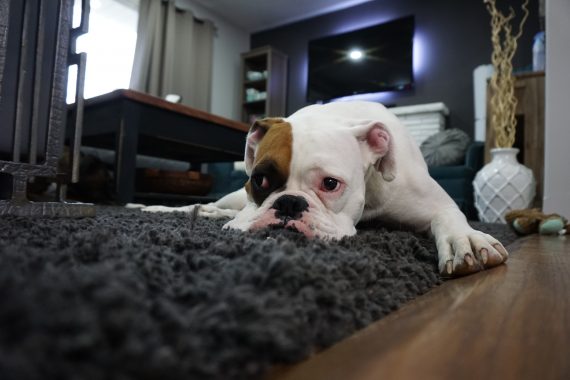Signs Your Dog Is Suffering From Separation Anxiety When You Leave Your Home

During these past three months, dogs have spent every waking moment with their pet parents and family enjoying extra playtime, walks, attention and treats. As pet parents begin to return to the office for work and families return to activities outside of their house, dogs are facing a new reality of being home alone, triggering severe stress and separation anxiety. Regardless of the length of time you’re gone, your dog can go into panic mode and engage in destructive behavior.
Review these signs of separation anxiety and learn what you can do to help train your dog to feel more comfortable when you leave your home.
Separation Anxiety Signs
Dogs can exhibit stress and fear in many ways so if your dog exhibits one or two behaviors it might not be something you need to worry about. However, if they regularly exhibit multiple of the behaviors listed below, it is very likely that your dog has separation anxiety. While these behaviors commonly occur while you are away, dogs can start to show them as you prepare to leave.
- Whining, pacing or trembling
- Drooling and panting
- Peeing in the house
- Excessive barking or howling
- Chewing, scratching, digging, ripping this apart and other destructive behavior
- Escape attempts – some can cause serious injury
- Not eating their food or treats
How to Manage Separation Anxiety
If your dog is exhibiting mild to moderate separation anxiety, the goal is to remove the anxiety the dog feels from being alone. This is a gradual process that starts with short timeframes of independent activities that grow into longer time periods spent apart from the dog. Here are a few things you can do to help your dog feel secure.
Calm Exits/Entrances: When leaving or entering your house it is best to say a simple goodbye and hello or even ignore your dog. Emotional greetings, when you leave and arrive home, tells your dog that it is a big deal that you left.
Continuously Come and Go: Help your dog learn that you are not abandoning them every time you leave the house by practicing leaving and returning before they get upset. For some dogs it might require smalls steps in which you pick up your keys, walk out the door and walk right back in. For other dogs you might be able to walk outside for a few minutes before entering your home. Continue to increase the amount of time you leave as your dog gets more comfortable.
Tired Dogs Are Happy Dogs: A well-exercised dog means a happy and less anxious dog. Before you leave for a long period of time make sure your dog gets some type of exercise like a long walk or run or playing catch for a good amount of time.
Break Your Routine: Some dogs start to get nervous as you prepare to leave. They recognize your routine of getting dressed and packing up your bag. Break the pattern your dogs sees by getting dressed, grabbing your keys and sitting down on the couch or getting dressed and sitting down to watch a movie.
Make Alone Time Fun: Give your dog a special treat, that they only get when you leave, like a frozen Kong filled with peanut butter or a snack that will take them awhile to eat. It’s important that they only get this special treat when you are gone. While at home you can help your dog become comfortable with being away from you by increasing independent playtime with mentally stimulating games like the Muffin Tin Brain Game.
Take Your Dog To Daycare: At Dogtopia daycare, dogs can run and play getting plenty of exercise and even learn a new command or two. Paired with dogs of similar size and personality, dogs enjoy endless socialization with their BFFFs (Best Furry Friends Forever) making it the most exciting day ever! Pet parents can join in on the fun from work or home by watching their pups on the webcams. You’ll pick up a tired but happy dog who will be begging you to bring them back for more daycare! Find a Dogtopia near you.











